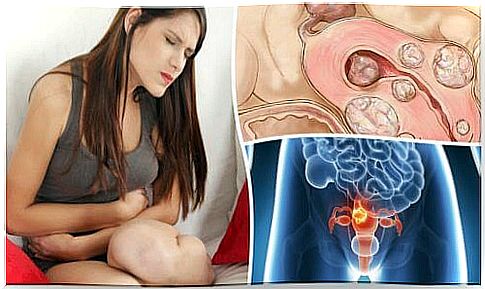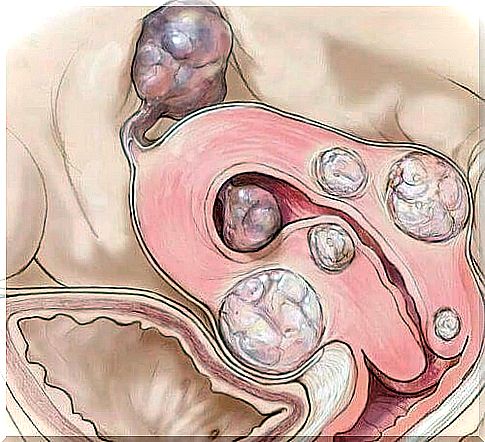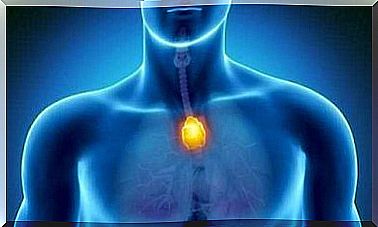5 Facts About Uterine Fibroids You Should Know At All Costs
Even if they are not dangerous, it is always better to do frequent gynecological check-ups for an early diagnosis, as well as appropriate treatment for uterine fibroids.

Uterine fibroids are abnormal masses of muscle tissue that form on the surface of the uterus and more rarely in the cervix.
Their presence is often alarming for diagnosed women, but only 0.5% develop because of the carcinogenic cells.
This means that although they can cause gynecological discomfort, they very rarely pose a risk of cancer in the body.
But, it is however a condition that needs to be paid attention to, as it can interfere with reproductive and hormonal health.
The Spanish Society of Gynecology and Obstetrics assures that nearly 70% of women can have this problem at some point in their life.
Despite this, women do not learn much and in fact, they realize the disease after a long time.
That’s why in this article, we want to share with you 5 important facts that every woman should know about their development.
Discover them!
1. What is a uterine fibroid?

Fibroids are benign types of tumor that appear mostly after 20 years.
Also known as myomas, leiomyomas, or fibromyomas, these are small, round-looking masses of tissue that may be microscopic or larger in size.
Their appearance is linked to genetic and hormonal factors and unfortunately it is one of the causes of infertility in women.
2. What are the types of uterine fibroids?
Fibroids fall into four types, depending on where they are located in the uterus.
Submucosal fibroma
- These are the ones that form just under the myometrium, which is the lining that protects the inner wall of the uterus.
- It can extend to the interior part of the uterine cavity. And when it gets bigger, it takes up a lot of it.
Subserous fibroma
- This type of lump forms just below the serosa, the layer that covers the outer part of the uterus.
- Its appearance causes the uterus to acquire a nodular appearance.
Pedicled fibroma
- These fibroids are of the subserous type but unlike the previous ones, they get bigger and eventually spread into the uterus, attached to a thin cord known as a pedicle.
- This type of tumor can grow inside the uterine cavity or outside.
Intra-mural fibroma
- These are lumps that form inside the muscular wall of the uterus and as they grow they can deform both the outer and inner walls of the organ.
3. What are the symptoms of uterine fibroids?
Although in most cases it is a disease that is difficult to detect due to the lack of symptoms, more than half of those affected can experience changes that alert them to their presence.
Among them we can find:
- Heavy and irregular menstrual bleeding
- Inflammation and pain in the lower abdomen
- Sudden weight gain
- Difficulty getting pregnant
- High risk pregnancies and childbirth
- Pain during coitus
- Changes in urinary habits
- Low back pain
4. How do uterine fibroids affect fertility?
One of the main concerns in women diagnosed with this condition is the consequences on their reproductive health.
When tumors grow to a significant size, they are likely to affect fertility or complicate pregnancy.
The risk of becoming infertile varies from case to case, almost always depending on the quantity, and since progesterone predominates during pregnancy, it is possible to carry out treatment to be able to conceive.
However, it should be taken into account that this treatment increases the risk of miscarriage during the first trimester of pregnancy. As well as the risk of premature delivery.
Today the myomectomy (which removes myomas or fibroids) is one of the most effective options for those who, at a reproductive age, want to get pregnant.
5. What are the treatments for uterine fibroids?
Many women who are diagnosed with this condition believe that the only solution to fighting fibroids is surgery.
But, it is important to know that this is not the only treatment and in fact, when they are too small, it is not necessary.
- Usually, small masses are treated with pharmacological treatment prescribed by a healthcare professional.
- If it doesn’t respond to the effects and the fibroids get bigger, there is no cure but to remove them.
- In these cases, a myomectomy is performed, which allows the removal of fibroids without affecting the uterus.
- When there are complications, a hysterectomy is performed. In which a partial or total removal of the uterus is made.
- Many specialists recommend treatment with ulipristal acetate, a progesterone modulator that reduces the presence of these tumors in the uterus.
The monitoring of symptoms and gynecological check-ups are essential to achieve a good early diagnosis of this disease.
If fibroids are not very serious, it is always best to see your doctor to analyze them in detail.









